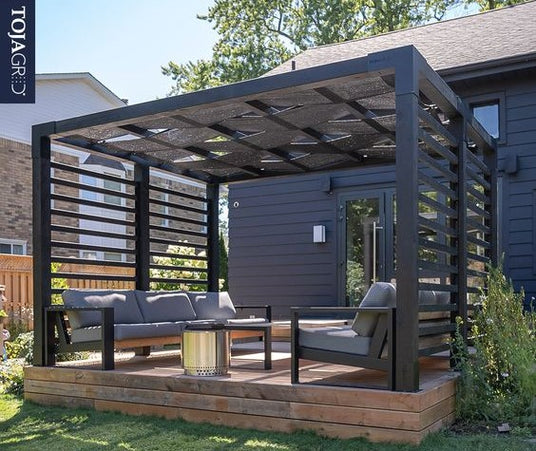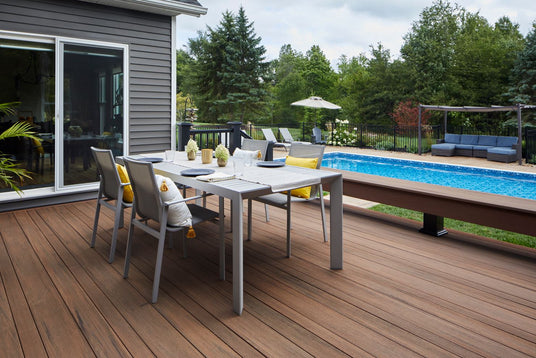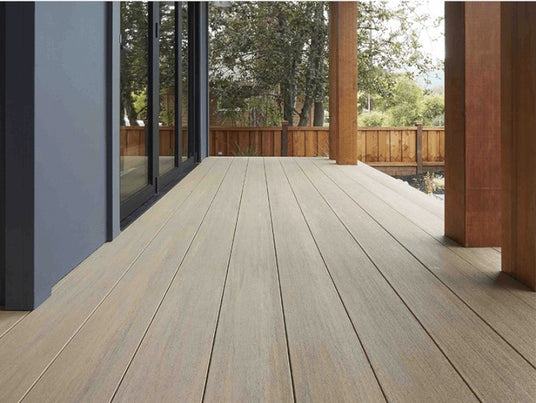
Patio avec pergola intime Laval
Design personnalisé d'un patio en composite TimberTech avec une pergola en cèdre qui intègre un mur d'intimité ainsi que des découpes en acier galvanisé.
Bienvenue sur notre boutique
Votre patio peut servir à de nombreuses fins. Il peut être dédié à un espace de détente, de divertissement, de cuisine et même comme un lieu de travail. Le design de votre patio doit donc tenir compte de vos besoins spécifiques pour l’utilisation que vous prévoyez en faire. Petit conseil pour votre design de patio, prévoyez les besoins quotidiens de votre foyer et non pas les grandes occasions. Rares sont les fois où vous serez très nombreux à l’utiliser. Il faut donc limiter l’espace excédentaire en prévision de réceptions et se concentrer sur l’optimisation des besoins réels de votre famille. Ça vous permettra d’optimiser l’espace et d’être plus près votre budget. Pour vous aider dans la suite de votre réflexion, rédigez une liste de vos besoins.
Photo: Espace lounge avec ajout d’une pergola TojaGrid au patio pour procurer de l’ombre aux occupants. (Source: TojaGrid)
Maintenant que vous avez fait le tour de vos besoins, vous devez réfléchir à la disposition des zones et à la circulation autour de celles-ci pour bien faire votre design de patio. Tout d’abord, il est utile de diviser votre patio en zones distinctes en fonction de leur utilisation prévue. Par exemple, vous pourriez avoir une zone de détente, une zone de repas et une zone de divertissement. S’il est possible d’en combiner sans compromettre l’utilisation prévue, vous gagnez à le faire. Elles prendront moins d’espace et vous maximiserez votre superficie. Ensuite, vous devez réfléchir à la circulation entre ces zones et à la manière dont les gens se déplaceront sur le patio. Assurez-vous que les chemins sont suffisamment larges pour permettre aux gens de circuler confortablement, sans entraves. Créer un premier croquis de votre idée à cette étape, vous pourrez ensuite l’adapter en prenant en compte les autres aspects.
Photo: Zone repas sur le patio et zone lounge près de la piscine. (Source: TimberTech)
Beaucoup de gens commettent l’erreur de penser aux matériaux après leur design de patio, puisqu’ils ne pensent qu’à l’aspect esthétique et pratique de ceux-ci. Ce qu’ils ignorent, c’est qu’il y a un aspect technique et financier à y penser avant. En ce qui concerne les grandeurs de matériaux, il est important de les prendre en compte avant afin de les optimiser. Les matériaux pour patios peuvent être trouvés dans différentes formes et tailles. Dépendant vos choix, ils peuvent influencer le design. Par exemple, si vous choisissez de faire un patio en composite, la majorité des gammes sont offertes en planches de 12, 16 et 20 pieds de long. Faire un design de patio avec des longueurs identiques ou des multiples de ces longueurs devient donc très intéressant. Cela vous permettra de rentabiliser les planches, donc moins cher. En plus, ça prend moins de temps pour la construction, puisqu’il y a moins de mesurages et de coupes. Évidemment, il est aussi important lorsque vous choisissez vos matériaux de tenir compte de leur durabilité, de leur esthétique et de leur entretien. Cependant, garder l’aspect technique de leur optimisation en tête peux s’avérer une excellente idée! Au besoin, révisez votre croquis à cette étape après avoir fait le choix des matériaux.
Photo: Exemple d’un patio sans entretien en PVC Azek, collection Vintage, couleur Weathered Teak. (Source: Azek)
Finalement, une fois les étapes précédentes complétées dans votre design de patio, il est temps de penser aux éléments qui iront dessus. On parle ici du mobilier, de la décoration et de l’éclairage. Le choix du mobilier peut influencer certains éléments de votre design, puisque vous devez vous assurer que les dimensions sont adéquates pour les zones et les aires de circulation sur votre patio. Le mobilier définira le style de votre aménagement. Ensuite, le choix des accessoires ajoutera du confort et de la personnalité à celui-ci. Il est aussi important de prendre en compte l’éclairage de votre patio. Assurez-vous que vous disposez d’un éclairage adéquat pour chaque zone de votre patio, de sorte que vous puissiez l’utiliser confortablement, même après le coucher du soleil. Des lumières d’ambiance peuvent également ajouter une touche de charme à votre espace extérieur.
Photo: Ajout de décoration, de végétaux et d’appareils d’éclairage In-Lite sur le patio et dans la cour pour créer de l’ambiance. (Source: In-Lite)



